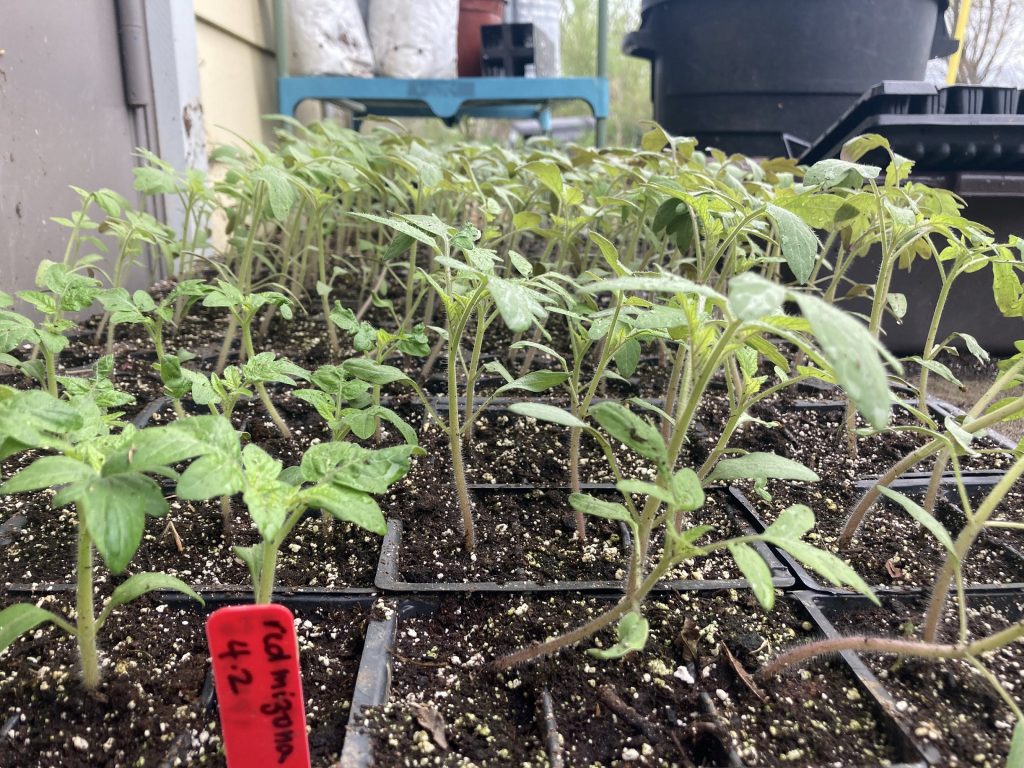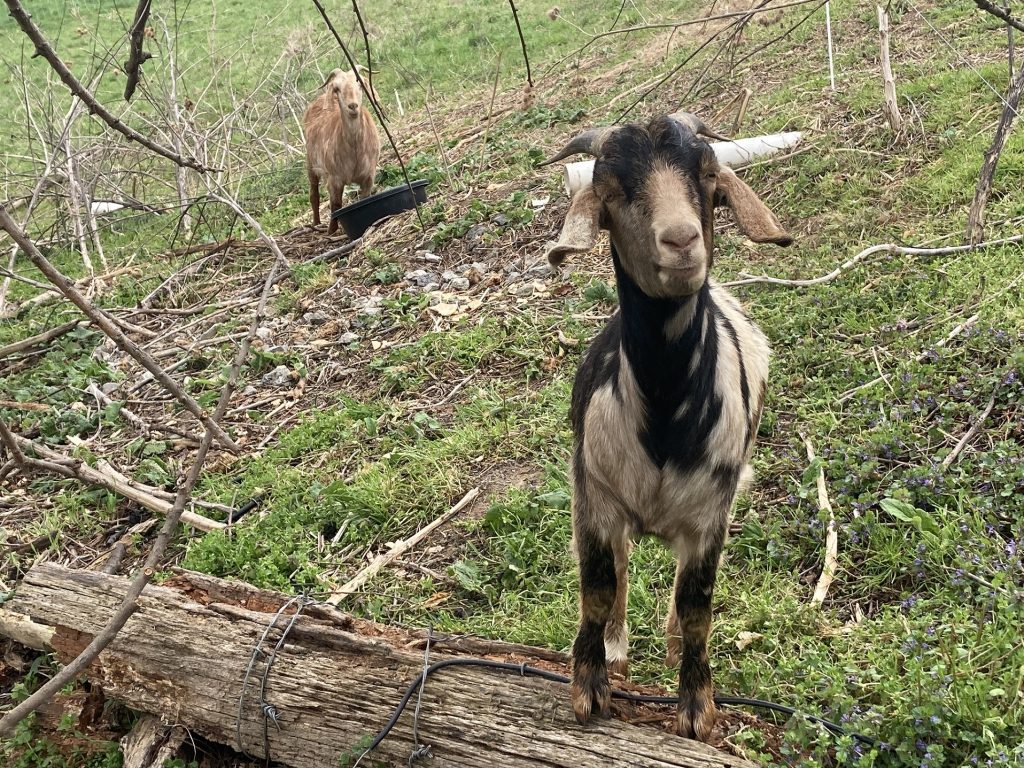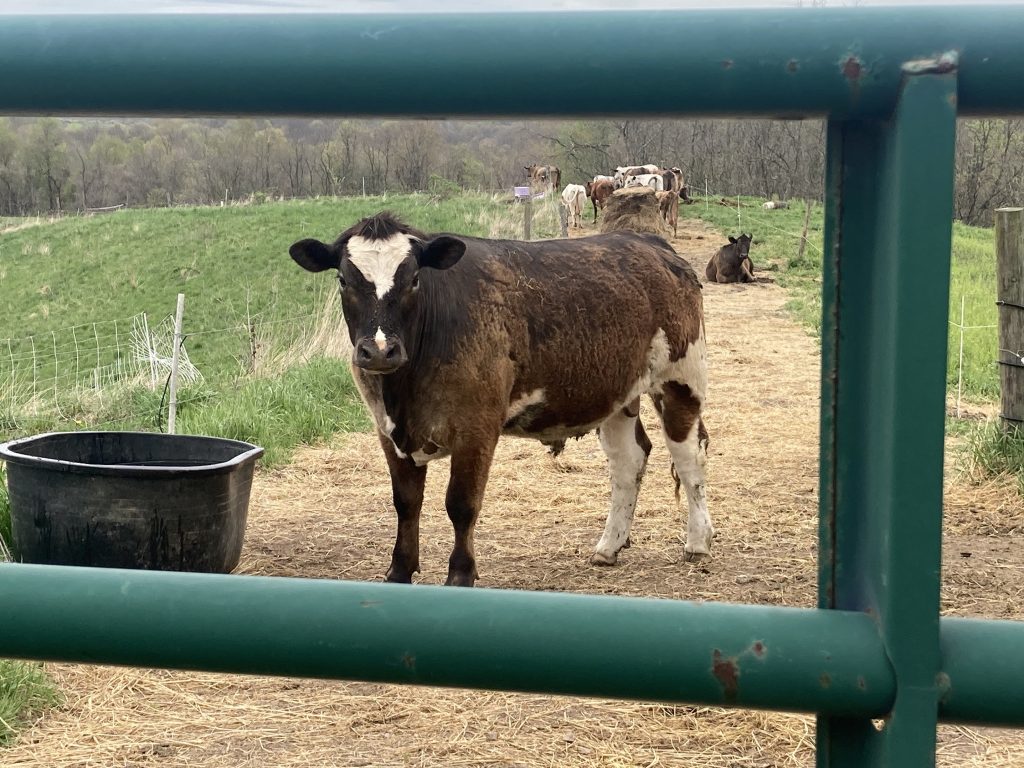News
Small farms in southeast Ohio see transformative potential in the upcoming farm bill
By: Theo Peck-Suzuki | Report for America
Posted on:
Athens, OHIO (WOUB/Report for America) — A few years ago, Lindsay Klaunig and her partner turned a decrepit plot of country land into a successful local business called Trouvaille Farm. Much of their revenue comes from seed crops, but they also raise beef cattle and make their own chocolate products that can be found in stores around Athens.
This year, however, Klaunig is facing a dilemma: If she makes too much money, either she or her partner will have to stop farming.
The reason is health insurance.
“If our farm does too well, we get kicked off (Medicaid), and then you’re put into that trap where you’re in the open market for health insurance,” Klaunig said.

“Most everyone else I know has a partner or somebody on their farm who has an off-farm job that supplies the insurance,” Klaunig said.
Small farms predominate in hilly Appalachian Ohio, where demand for local produce is high and large industrial operations aren’t feasible. Today, these farms face a range of challenges. Health insurance is just the beginning.
Would-be farmers have to jump through a range of hurdles just to get started. Access to land and capital is poor. Inflation means growing food is more expensive. And the rising frequency of extreme weather events due to climate change puts crops at increased risk of failure.
All of this and more brought Klaunig and many others to Washington, D.C., in March, where they lobbied Congress on a raft of proposals for this year’s farm bill. They’re hoping the federal government will do more to support small farms and new farmers.
That includes more robust funding for conservation practices and a bigger slice of the pie on subsidies and insurance.
Molly Sowash, program manager of Rural Action’s Sustainable Agriculture program, said that currently, farmers are aging out and younger generations aren’t stepping in to replace them. The challenges are too steep.
“It still keeps me up at night, whether farming is a viable career for young people, including myself,” said Sowash, .
Klaunig can attest to how hard it is to get started. She and her partner spent 15 years working on other farms, learning the trade and saving money until they finally had enough to buy their own property. The place they finally found took a lot of work to get running.
“When we came, it was like, the buildings were all broken down, broken windows, syringes all over the floor, burdock weeds above your head,” she recalled. “But we could see the value in the fact that somebody had taken care of this land and added fertility, rather than subtracting.”

Klaunig said she was lucky to have a partner when she bought Trouvaille Farm.
“I don’t know that the folks we bought it from would be as confident selling to a single woman,” she said.
When Klaunig was first learning how to farm, she struggled to persuade her employers to give her time on tasks traditionally seen as more masculine.
“I was saying, ‘Yeah, I need to get in some tractor, can you show me how to do hay, can I learn how to do this?’ And they’re like, ‘Yeah, yeah, yeah, but, meantime, could you do three farmers markets? Because you sell things so well,’” she recalled.
She said she would like to see the farm bill invest directly in women and people of color in order to offset the stigma.
Farming is a precarious business
Much of farming comes down to making a long-term investment — planting crops — with a high degree of risk and narrow profit margins. If crops fail, so does revenue.
The federal government provides insurance to protect farmers from bad years, but the current system disproportionately favors large-scale growers, according to Sowash. She and others lobbied for measures to ensure federal dollars are less concentrated at the top.
The way crop insurance gets doled out also poses problems for some small farmers. Currently, most insurance covers commodity crops such as wheat and corn. Specialty crops, such as the vegetables Klaunig grows at Trouvaille Farm, enjoy fewer protections.
“If my crops die, I get zero,” Klaunig said.
Hanging over all of this are concerns about climate change. Experts are warning that the planet is already experiencing more extreme weather, a phenomenon that is projected to worsen significantly — though by how much depends on the speed with which countries transition away from energy sources that emit greenhouse gasses.
For farmers, more unpredictable weather just amplifies the risk that’s already built into the industry.
“Something we’ve seen are these big rain events where you’ll just get inches of rain in an hour,” Klaunig said. “When the rain is milder and spread over more time, it slowly soaks in, the plants can utilize it. When you get these pounding rains — one, it’s hard on the plants. Two, it just is pounding the soil, and just saturating it so quickly, it’s nearly impossible to prevent some level of erosion.”
Klaunig said those heavy rains also cause soil to go anaerobic, which is not good for the crops she’s growing. “It’s like trying to farm in a puddle,” she said.
On top of that, there’s the wind. Trouvaille Farm has a greenhouse that has already been damaged by high winds.
“Going forward, I don’t know if we’re going to be able to have it,” Klaunig said.
And then there are the spells of unseasonably warm weather. Last year, Klaunig said, they had a week of 90 degree weather in May. It ruined some of her plants.
“Those kinds of plants panic, they go to seed, they die, they go bitter, or they just become unusable,” she said.
It’s not just the farmers who lose out when that happens. Crop failures decrease supply, which can increase food prices for consumers.
“Most seasons, you kinda have one chance to produce a crop,” Klaunig. “You can’t start over.”
In Washington, both Klaunig and Sowash lobbied legislators to pass the Agriculture Resilience Act as part of the farm bill. The act would expand on existing programs that encourage farmers to adopt good conservation practices.
Sowash, who owns a small beef farm in addition to her job at Rural Action, said even cattle — often seen as a contributor to greenhouse gas emissions — can be of use in the fight against climate change.
“Livestock can be a tool for climate mitigation if they are out on pasture and if they are rotated regularly,” she said.
That’s how wild grazing animals like bison evolved in the past. They moved around regularly, giving the grass time to grow deep roots that trapped carbon in the soil.
“They were building our country’s soils and prairies,” Sowash said.

“So imagine hundreds of livestock on a concrete pad, instead of out grazing and doing the important work of building soils,” Sowash said.
Lawmakers have until September before the previous farm bill, passed in 2018, expires. It remains to be seen how much of what Sowash and Klaunig went to D.C. to ask for will make it into the final legislative package. Klaunig said she doubts they’ll get everything they need this time around.
Still, she hopes to keep the conversation going — and maybe make it a little louder.
“It has to be more than just the farmers advocating (for these changes),” she said.
And while the challenges she faces as a small Appalachian farmer are large, Klaunig expressed no regrets.
“You’re looking for a job that feels important, and I can’t think of anything more important than growing food,” she said.

